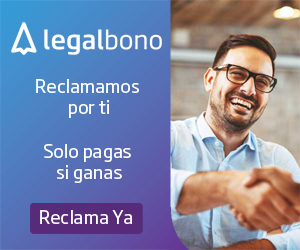Registration of trademarks, patents, designs and works
There are several mechanisms for the protection of intellectual and industrial property rights, in order to prevent unlicensed people from violating the exclusive exploitation rights, with the possibility of going to the courts for their defence. In this guide you will know how the registration of trademarks, patents, designs and original creations works.
What is the purpose of the Intellectual Property Registry?
The purpose of the registration of an original creation is “the inscription or annotation of the rights relating to works, performances or productions” in order to make public the authorship or ownership of the enrolled rights. “Acts and contracts of incorporation, cession, transmission, modification or extinction… of unregistered rights” (art. 1 of the Intellectual Property law) may also be entered. The protection acts both if the rights correspond to the author, to a third party to whom they have been assigned, or to the owners of neighboring or related rights.
What rights can we protect with registration?
By registering an idea as a creator, designer or owner we impede the use or exploitation by third parties. They can be artistic, literary, scientific or industrial works disclosed by any means or support. Thus, the original creations are protected by the law of intellectual property, being able to be registered separately according to the purpose of the protection that one seeks:
Author rights
It protects original literary, artistic or scientific works (including computer programs and databases), during the life of the author. After his death he protects it for a period of 70 years, giving him the exclusive right to exploitation. In international regulation, this right of exploitation is protected by copyright and licensing.
The copyright includes:
Written Creations: books, magazines and articles, novels, Tales, poems…
Musical works: Musical compositions, song lyrics, etc.
Artistic Creations: drawing, painting, photography, sculpture…
Dramatic and choreographic works: theatre, operas and dance.
Movies, multimedia products, video games, TV programs, cartoons…
Software: Computer programming language created by man (source code) or by machine (object code).
Industrial property Rights: Design, Brand and patent
The main characteristic of industrial property rights in respect of copyright is that industrial property, being corporeal, can be transmitted. Instead, copyrights are often moral and cannot be transmitted, but only ceded.
They protect the design or external appearance of the product, the brand that identifies it and the patent of the invention, as long as it is proven to be novel and has a unique character. Depending on the law you intend to protect, you will have a different duration:
The design: It is protected by a renewable term of up to 25 years, prevents others from copying them.
The brand: The trademark registry protects the exploitation of the distinctive sign composed of words, figures, the combination with sounds, or even artistic names for a period of 10 renewable years.
The patent: exclusive and excluding exploitation of an invention for 20 years. Patents may protect a device or product, machine, manufacturing method or procedure for obtaining the product.
Sometimes a single product may be protected by more than one type of intellectual property. For example, in a car:
- Trademark registration can protect the manufacturer’s name and logo.
- The parts and mechanisms of the car that make the engine run low-power can be patent-protected inventions.
- The design of the car (the style and appearance of the doors, color, wheels…) can be protected by industrial designs.
- Even the operating manual, an original written text, is protected by copyright.
Procedure for registration of trademarks, patents or designs
- First of all, know if your work, brand, patent or design already exists through the locator of the OEPM if it is at national level, or in that of OMPI if it is international.
2. Once the type of registration (trademark registration, copyright, design or patent) has been decided, you must submit an application in the intellectual and industrial property registries:
- National: Through the online service of the OEPM.
- International: Through the WIPO website.
- The author’s intellectual property Rights collective management entities are also useful.
- The application must contain a clear and detailed reproduction of the right to be registered. For example, if it is a brand, they will ask for the colors and image of the logo.
4. Once the registration application process is initiated, you must:
- Present the documentation that justifies your ownership.
- Pay the corresponding fees, which will vary depending on the application.
In order to keep the registration of the trade name in force, the holder must fulfill the following obligations:
- Use the trade name
- Request renewal every 10 years, paying the fee
Is it obligatory to go to the register of intellectual and industrial property?
No, the registration is voluntary, but it is highly recommended, because with it you will protect the rights of who is its holder and no other equal can be registered, even if it is opposed or incompatible, unless judicial resolution to the contrary.
Industrial secrecy can be protected between individuals and companies without the need for registration, through a confidentiality agreement.
On the other hand, after the entry into force of European legislation on unregistered design, the non-registered rights will have their own protection, for 1 year for copyright and for 3 years for an industrial design without registration, since they were accessible to the public, that is to say, published by any means with the name of its author. In case someone copies or exploits your work or design without your consent, you can go to court.
Consult with our experts for any clarification about the registration procedure and the protection of unregistered creations.

